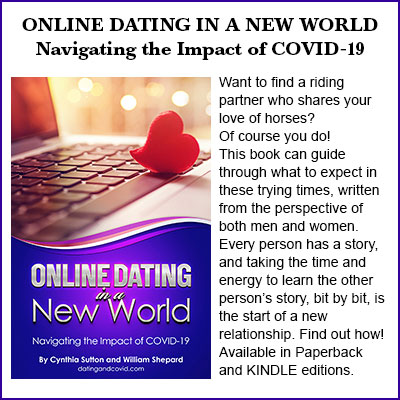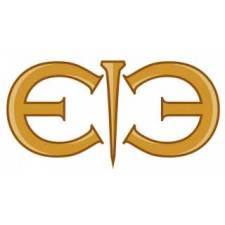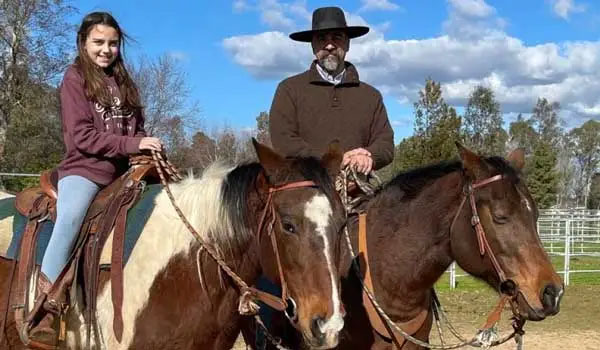
By Nick Pernokas
Forty-five-year-old Carlos Macias was raised in the small town of Elk Grove, California. This urban setting in a non-horsy family wasn’t the background that most people would think of for a cowboy. Carlos received a nudge in that direction from an aunt who was involved in “The Painted Ladies,” a drill team that performed at rodeos. She put him on his first horse when he was little and let him ride in some of the parades that she was performing in.
It was a while before fate intervened again. In 1989, Lonesome Dove premiered on TV and Carlos was captivated by the story. He began to think about really riding horses. By 1992, when he was 14, Carlos was cleaning stalls at a local ranch in return for learning to ride. An old mustanger named Jerry Lamb also worked there, and he put Carlos on a few colts.
“It was the old ‘teach a kid how to swim by throwing him in the pool’ deal,” laughs Carlos.
Garth Brooks was on the radio in the early Nineties, singing about rodeo, and cowboys were attractive to a boy searching for his identity. Carlos’s high school had an AG program and some of the students participated in high school rodeo. Soon, Carlos was riding bareback broncs at the rodeos. He competed in high school rodeo from his sophomore through his senior year.
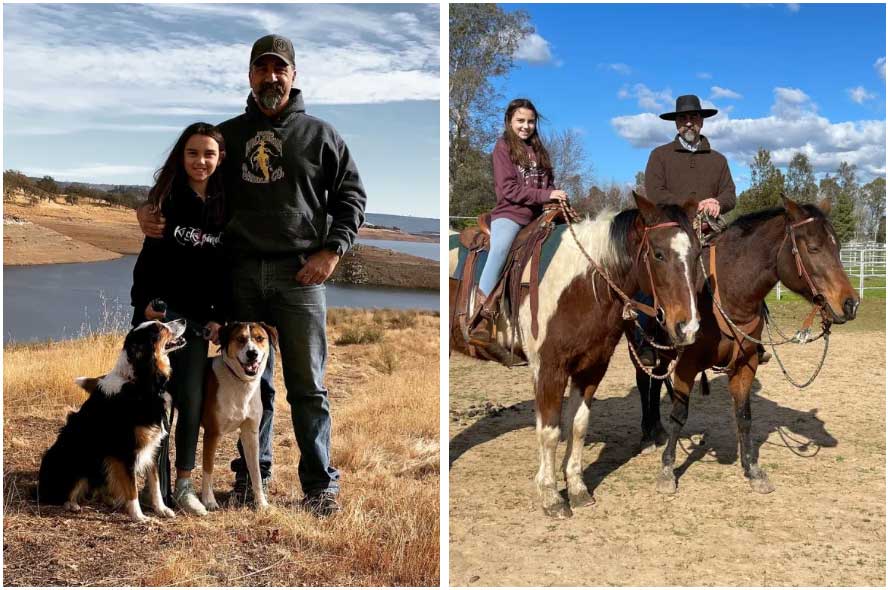
“I was never really good at it,” says Carlos. “It landed me in the hospital a couple of times.”
In his senior year, Carlos took advantage of an internship program that allowed students to leave classes early to work in a field of their choosing. Carlos worked for a local cutting horse trainer, Ed Murphy, who helped him advance his horsemanship tremendously.
Although Ed was training cutting horses at the time, he had been born and raised in Tonopah, Nevada, and he had a reverence for the ways of the Nevada buckaroo.
“That’s where I learned about the whole buckaroo thing and from there it just kind of started the fire.”
When Carlos graduated from high school in 1995, he headed to Bozeman, Montana, and enrolled at Montana State University for the fall semester.
Carlos attended MSU for a year, but the nightlife proved to be a distraction.
“I did a lot of growing.”
Carlos really wanted a cowboy-type job, so he went to work for an outfitter near Belgrade, Montana. The outfitter packed a lot of hunters into the back country and he bred Belgians, Andalusians and Quarter Horses to provide a big-boned remuda that was up to the task.
There were a lot of colts to work with. Carlos lived there for a year and a half, even though he was still technically in school. He also started working for Pete Melniker at Double Diamond Halter in Gallatin Gateway, Montana.
Double Diamond made a handtied halter and lead that was very popular with equine clinicians. Pete provided an introduction for Carlos into the world of some of his customers. These were folks like Buck Brannaman, Peter Campbell, Tom Dorrance and Ray Hunt.
Being around these types of people spurred Carlos on to develop his own training and horsemanship in the style that they were advocating. The clinicians also emphasized the type of gear that they used, as well as the importance of quality tack.
“It was in the lineage of Tom Dorrance’s way of horsemanship because all of those guys were directly or indirectly, disciples of Tom Dorrance.”
Carlos was able to apply their methods in his own work with the colts that he was training at the outfitters.
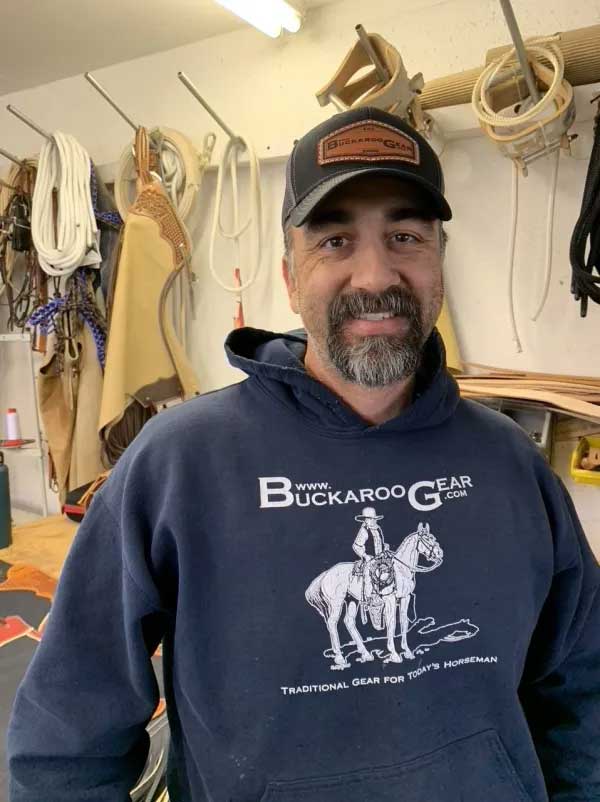
Pete Melniker also had an influence on Carlos that carried over into his interest in building gear. Carlos really had no idea at the time that he would ever be in the cowboy gear manufacturing business, but he learned a lot about work ethic and running a business from Pete.
Around 1998, Carlos decided that he’d had enough of the tough Montana winters and he headed back to California.
“I continued with chasing the horsemanship and just really being passionate about the horses.”
In California, Carlos stayed busy working for a couple of cutting horse trainers, a race horse trainer and doing some horse training himself.
Odd jobs and landscaping helped to take up the slack for Carlos.
Although he could see that college wasn’t for him, Carlos decided to take some junior college courses in web design. One class was keyboard typing, which would prove invaluable. In 1999, the internet was starting to take hold in America for commercial use and Carlos decided he wanted to be the first internet-based cowboy gear business.
“I was just going to buy and resell.”
LostBuckaroo.com was established in 2000, and for the first couple of years Carlos was happy with being only a retailer. Frontpage web design and dial-up internet were in their infancy, and most established western businesses still relied on catalogue sales.
Carlos advertised in Western Horseman, which was a necessity for this type of cowboy gear. At the time though, he was one of the few that mentioned a website in his ad. This pushed his customer base from horsemen who knew of this type of gear in the Northwest to a worldwide clientele.
Carlos enjoyed the selling, but he became disenchanted with the quality of some of the goods that he could buy wholesale. In 2003, he purchased a sewing machine with the idea of producing his own headstalls. Carlos quickly learned that building small amounts of strap goods was not profitable. He searched for another product that he could custom build profitably. He bought some chap leather and started building chaps.
Carlos was self-taught and he made his first patterns from a pair of his own chinks. He was familiar with the short chaps known as “armitas,” but mainstream horsemen weren’t. Carlos began to build them for fans of buckaroo gear and soon he had established a niche market for himself.
The armitas were traditionally “step in” style, covering mostly the front of the leg, while the chinks had buckles or clips and provided more coverage for the side of the leg. Eventually, these distinctions became blurred as more people ordered armitas.
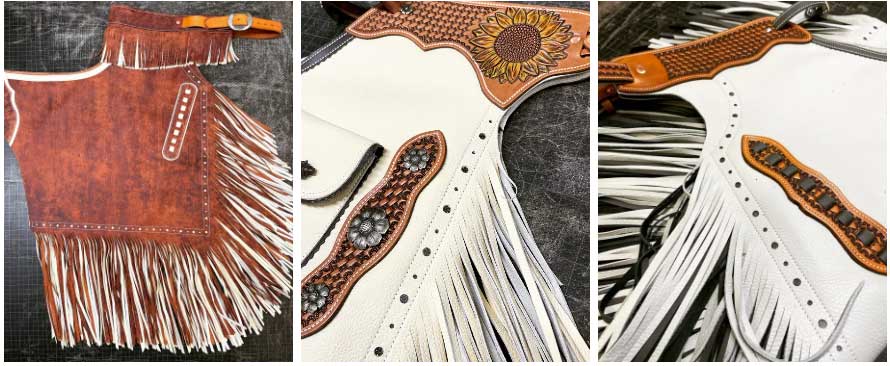
Armitas were originally made out of deer or elk hide and didn’t have any hardware on them. They were a lighter weight legging with a fringe apron and Carlos copied this style in a 3- to 3 1/2-ounce chap leather. He built his chinks out of a little heavier 4½- to 5-ounce weight leather.
“I feel that while the leather in the armitas is a little lighter, the fringe apron adds weight and the finished product is about the same weight overall as a pair of chinks.”
Carlos’s chinks and armitas varied slightly in the leg pattern, but functionally they served the same purpose.
“Armitas are a little more comfortable to wear from the beginning, whereas chinks require a little more breaking in because they have a skirting belt and yokes.”
Step in chinks are usually built a little snugger and should stretch out with use to a little looser fit. The step ins are not really as popular as Carlos’s other styles anymore.
Carlos feels that chinks probably evolved from full-length leggings that had gotten so muddy and rotten on the bottom that they were shortened and repurposed. Their style would vary according to what the original chaps were. The Nevada buckaroos then took that style and made it their own with longer fringe and more esthetics.
Carlos’s signature style is long fringe on his chinks. You only need so much coverage below the knee and around the back of the leg. The rest is fringe, which he is generous with.
In 2004, Carlos married Heather. Their place also housed horses and an arena, which allowed Carlos to continue to engage in cowboy activities. Equine clinician Peter Campbell became a friend and had a large influence on Carlos’s horsemanship. Carlos helped Peter and hosted some of his clinics on his property.
About this same time, Carlos became friends with Sarah Hagle and John Willemsma. The two were both excellent leatherworkers and provided a lot inspiration to Carlos in his quest for quality.
The next several years saw a dramatic increase in interest in buckaroo-style gear. Carlos began to set up a booth for his products at The Californios Ranch Roping and Stock Horse Contest in Red Bluff, California.
At the time, the whole West Coast style of horsemanship and gear was going mainstream, thanks to clinicians like Peter and the Californios gave Carlos a lot of exposure in other areas.
As if this didn’t keep Carlos busy enough, he’d become so proficient in the computer world that he was also running the computer systems at a bank. In July 2007, Carlos and Heather decided that they wanted to start a family. Carlos quit his “day job” at the bank to focus entirely on his gear business. In 2008, Kaitlin was born.
“I wanted one of us to be home with the baby.”
In retail business, life can turn on a dime. The recession dealt the family a tough hand, but Heather had a job with benefits. Carlos was able to keep the business going and spend time with their daughter. As time went on, more of Carlos’ suppliers developed an online presence and the retailing of their goods slowed down. He began to specialize exclusively in the products that he made himself.
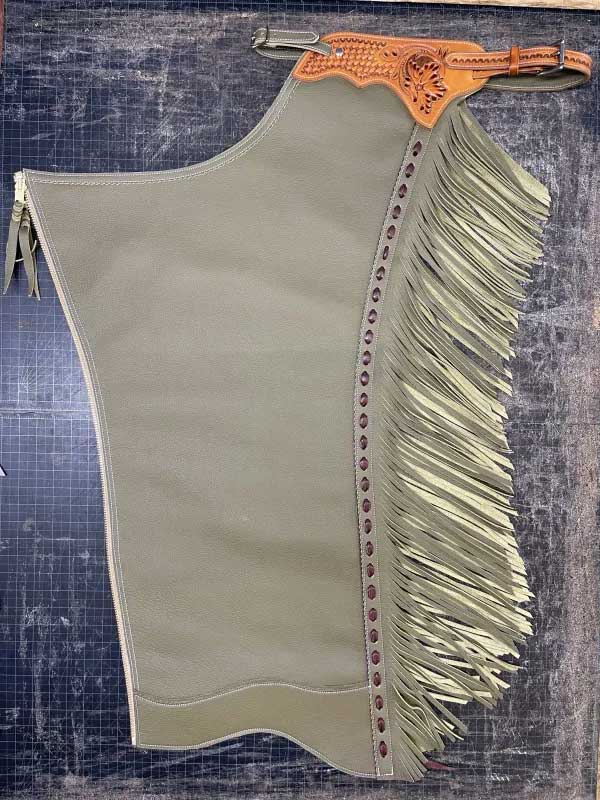
In 2010, the couple went through a bad divorce.
“Part of my identity was being a husband and a father. I had to re-find my way and re-find my place.”
Carlos found some comfort and direction from an unexpected source, radio host Dr. Laura Schlessinger. Carlos began to listen to her broadcasts and read her books.
“I did find that Dr. Laura was extremely helpful in trying to figure out what the next steps were, and how to cope.”
Carlos’s business and his daughter helped him to stay grounded and come out on the other side.
“If you’re in any kind of a small business, you just need to keep marching forward.”
The internet has continued to evolve with social media and Carlos doesn’t advertise any more. He uses Facebook and, more recently, Instagram to get the word out.
“The whole internet thing has changed a million different ways since I started.”
Carlos still does all of his construction himself in his 12×24-foot shop on his property in Wilton, California. In addition to chaps, he builds slobber straps, spur straps, breast collars and tapaderos. His girlfriend, Kim Leonard, will be joining him in a new shop in another building recently built on the same property.
The new leather shop will be double the space he has now, with room for Kim to do her jewelry construction and beadwork. There will also be room to work on video production for social media. Carlos would like to produce some instructional videos.
But where did the name come from? Carlos doesn’t know. He wanted something unique with “buckaroo” in it. So, was it a Freudian slip? A metaphor? Or just a another name for a drifting cowboy? It doesn’t really matter anymore. This horseman seems to be traveling a well-marked road now.
To find out more about Carlos’s work, call (916) 224-0553 or check out lostbuckaroo.com. You can also find the Lost Buckaroo on Facebook and Instagram.
LostBuckaroo.com
11816 Brauer Lane
Wilton, CA 95693
This article originally appeared on Shop Talk Magazine and is published here with permission.
There are more interesting articles in our section on Recreation & Lifestyle.






